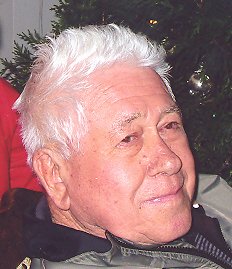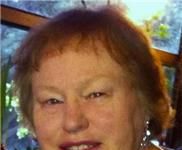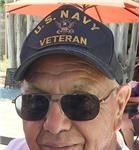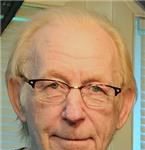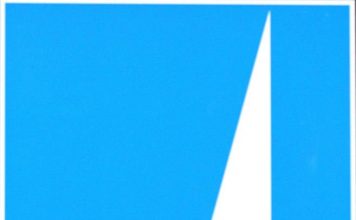Born in Glasgow, MT, February 6, 1924.
Sidney Lewon was a man of surprising dichotomy – He was a fighter, a poet, a history scholar, a scientist, war hero and at times so blusterous that we wanted to hide, or pretend we didn’t know him.
He could talk for hours about European and Middle Eastern history, including a fascinating amount of detail as to key historical figures, generals, battles and the various peoples and nations (Hunns, Visigoths, Mamelukes, Saxons, etc.). He knew languages, some French, German and Yiddish. Growing up in the depression with a father, who was a strict disciplinarian, he developed a strong sense of work and thrift. As a young boy, age 7 or so, he spent countless hours in the library in Glasgow, where he read prodigiously and soaked up the history, which he liked to talk about. It was quite fascinating to hear him talk about history, and he could go for hours.
He also talked about seeing movies, and he loved the Marx brothers, often getting into trouble with his teachers for mimicking Harpo. Sometimes, beneath the wooden platform just outside the theatre in Glasgow, he would find a nickel to get into the theater. If he could not find a nickel, he would simply sneak in.
His parents, Samuel and Anne, moved the family to California in the 1930s, and took up residence in Menlo Park. There were four older brothers and one older sister (Harry, Ben, Lou, Rube, and Loretta). Sidney was the youngest by 13 years and was the last living sibling. Sidney had a bar mitzvah, but I never knew him to step inside of a Schul.
He eschewed religion from that day forward, for reasons his family has never quite understood. High school days were characterized by athletic activity, including wrestling and basketball. Although Sidney was only five foot four inches, he could bench press 200 pounds.
There were fights and confrontations with other kids, tough kids. Sidney’s sense of honor dictated that he never stand down to anyone, even though he was only five foot four inches tall and his rivals were much bigger.
Back in the late 30s and early 40s, Sidney spent time at the Stanford golf course as a caddy, and more notably, he scoured through the creek thicket wolfing for golf balls. For fun and adventure, he hitchhiked from Menlo Park back to Montana during the summer of 41 and was given a ride by a couple of pretty young girls. The details of this adventure were only shared with me, his son – this story was not for his daughter’s ears.
Sydney was a decorated World War II veteran. He flew some thirty missions in 1943 and early 1944. He was a radio man and gunner. They used triangulation to navigate and he was trained to do this. He had dozens of pictures of planes going down in flames, which he took. He never talked too much about it, although he did say if he went down and survived, he didn’t want to be caught behind enemy lines by the German civilian population. The airmen were all given a pistol for this purpose.
After the war, upon returning to the states, he was flying back to California on a plane with a group Japanese American Nisei, who had fought and served the U.S. in Europe, and who were also returning home to California. The plane lost an engine and was losing altitude heading into the Sierra Nevada Mountains. The pilot was able to get the engine restarted and regain altitude. The Nisei soldiers thanked God, and I imagine, so did my father.
After the war Sidney went to college on the GI bill and earned a degree in Chemistry. He later earned an award for work he did for the Diamond Alkali Company on Ion exchange resins. He married my mother, Leah Solle, in 1951, and they had my sister in June of the same year. They had me six years later – a gift for my sister.
We were important to him, and he loved us very much, even if he was not comfortable telling us so. He pitched baseballs with me, and we played golf, even though he wasn’t very good. He taught me how to wolf for balls (he was very good at it), until the Stanford Golf Course police caught us and threw us out.
He took my sister and her best friend to the Cow Palace twice to see the Beatles. He even took them to Monterey, so they could attend the Monterey Pop Festival. He trusted they would not partake in the drug scene of that time, and he was right.
Sidney’s thrift and hard work allowed him to retire early in a reasonable amount of, although modest, comfort. He traveled regularly and extensively: Russia, Ireland, France, Italy, and Australia. He took a lot of pictures. When my mother decided she did not have the travel bug, he went alone.
Sydney loved to work out and regularly went to the gym. After my mother died in 1998, he met Gloria Webster on a blind date, set up by mutual friends from the gym. They married at the advanced age of about 75.
When he got macular degeneration in the early 2000’s, he became legally blind. Gloria had been doing all the driving, but when she had to be hospitalized, it was tough to keep him away from the driver’s seat. My sister and I tried everything, from calling the police to mixing up the distributor cap cables so his car wouldn’t start. His fury and wrath when he found out I sabotaged his car was something to reckon with.
When his health started to deteriorate the last couple of years, he eschewed doctors and insisted on letting nature take its course. Sydney had a strong heart. He was fighting to the end.
Sidney died on January 26, 2011, he was 86 years old. He was not perfect, as is no one, but he was a devoted father, husband, grandfather and great-grandfather. He had a life worth remembering and we’re going to miss him.


